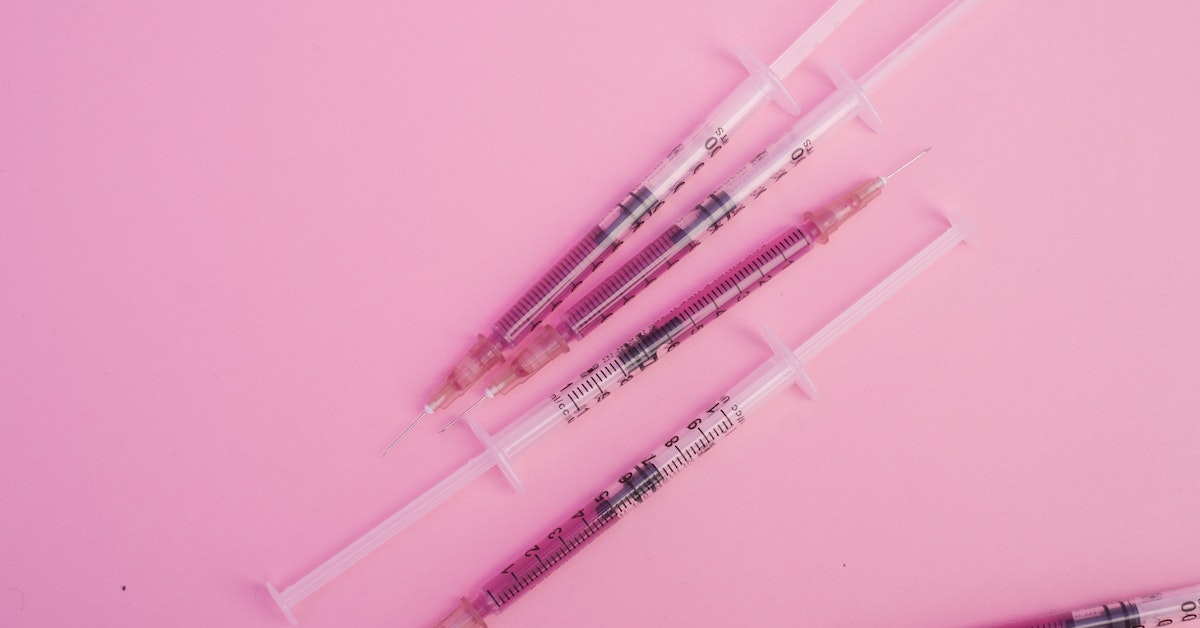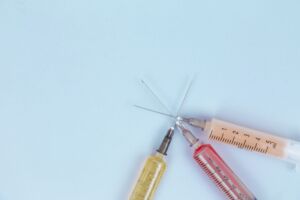
Do you struggle with knee pain or slow-healing injuries? Medical injections can improve your quality of life without the risks associated with oral medications and surgery. Like any medical procedure, it’s crucial to receive your injections from licensed providers in a clinic setting that will give you the most benefit. Here’s everything you need to know about joint injections and why you should consider receiving treatment at an integrated clinic.
What are Joint Injections?
Several types of injections are available for joint pain, and some can be used for soft tissue injuries. While certain injections like Sarapin are used to numb pain naturally and reduce inflammation, others play a more active role in helping your body heal.
Two of the most popular types of injections for pain are PRP and hyaluronic acid. PRP or platelet-rich plasma injections deliver healing factors directly to the painful or injured area. PRP is made with the patient’s own blood, processed in a centrifuge to separate red blood cells from plasma and platelets. The platelets and a small amount of plasma (the clear, liquid part of the blood) are then injected into the affected area. The platelets act as chemical messengers that call immune cells to the injury. They can jumpstart a stalled healing process, reduce inflammation and lead to long-term pain relief. Since PRP uses the patient’s blood with no added chemicals, it’s a very safe procedure with little to no chance of side effects.
Hyaluronic acid is a substance produced by the body to lubricate joints and plump skin. As we age, the body produces less of it, causing joint fluid to thin and be less effective at preventing friction damage. We can replace the natural lubrication by injecting hyaluronic acid into the knee joint. Hyaluronic acid coats nerves, protects cartilage, and reduces inflammation. PRP can be used with HA in the knee or separately.
Both HA and PRP shots are safe for most people, but you should tell your provider if you have a history of blood disorders, cancer, or if you may be pregnant.
What Conditions Do They Treat?
Hyaluronic acid injections are currently used in the knee, though other uses are being explored. They are ideal for people experiencing mild-to-moderate arthritis who want to slow progression and delay or prevent surgery. PRP, used with hyaluronic acid, is proven to slow arthritis progression by lubricating the joint and healing some of the damage.
PRP injections can be used almost anywhere. The most common uses include joint pain, repetitive use injuries, tendon and ligament injuries, and muscle injuries. Since joints and tough tissues, like tendons and ligaments, receive little blood flow, they are prone to slow or stalled healing. PRP can jumpstart the healing process so you can finish healing and be pain-free.
Who Provides Medical Injections, and What is the Process Like?
Licensed PRP and hyaluronic acid injection providers include Advanced Practice Registered Nurses (APRNs) and Family Nurse Practitioners (FNP). These medical professionals are trained to evaluate a patient and provide injections safely.
The process of receiving an injection depends on what type you are getting. Your provider will draw a blood sample for a PRP shot and then process it before injecting it. They may use an X-ray or other imaging to guide the placement of the shot. Most patients begin with three shots spaced a few weeks apart.
Since PRP acts as a catalyst for a natural process, it can take several weeks for the patient to begin feeling the results. Pain relief occurs along with healing. While you will probably feel results beginning around four to six weeks after your injections, your pain should continue to improve for up to six months. People treating acute injuries usually experience complete healing without requiring repeated treatment. Those with chronic concerns like arthritis often receive a yearly “booster” to keep pain and stiffness in check.
Hyaluronic acid injections require less prep, but your provider will probably use imaging to guide the injection into the knee. Some patients experience almost immediate relief after their hyaluronic injection, while for others, it takes a few weeks. These differences may be determined by how inflamed your knee is. Most people feel results for around six months and then choose to receive another shot. Patients who receive PRP and HA together may be able to go longer between HA injections.
The Benefits of Joint Injections as Part of an Integrated Treatment Plan
For many people struggling with pain, injections are a life-changing treatment. Injections effectively change the environment within tissues, reducing inflammation, relieving pain, and increasing the range of motion. Multiple treatments may be necessary when other conditions, like weakened muscles, spinal subluxations, or posture problems, also contribute to pain.
Integrated clinics employ more than two types of medical professionals, usually focusing on a particular disease or body system. At Vanguard Spine and Sport, our pain management clinics employ chiropractors, nurses, and physical therapists. By combining their efforts, our providers can design comprehensive treatment plans that address the multi-faceted nature of pain.
Patients with osteoarthritis who receive injections benefit from seeing a physical therapist in the same clinic. Through PT, they can strengthen muscles around the knee to stabilize the joint and increase function. An integrated treatment plan recognizes that every treatment can help in some ways and not others. By combining them, we treat the whole patient.
Our chiropractors and physical therapists don’t just treat pain; they also help prevent it. They can evaluate you to see if posture, foot, or gait problems caused your pain. Then they will work with you to correct your body mechanics to prevent future injury.
Medical Injections in Houston
Schedule a consultation at one of our two locations to receive a personalized treatment plan that addresses all aspects of your pain.





